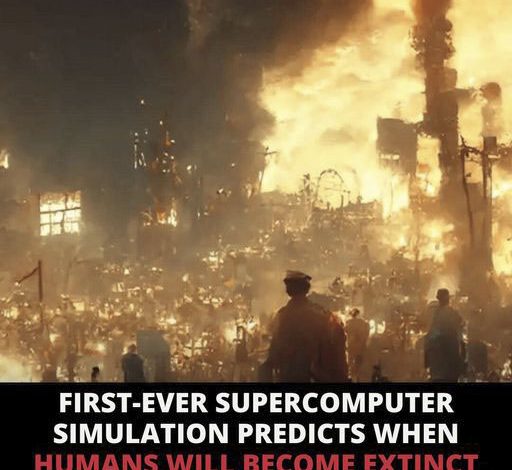
Speculation about humanity’s future has long been a topic of fascination, from dystopian films to scientific predictions. Recently, a supercomputer has projected a scenario in which humans, along with all mammals, could face extinction in around 250 million years. Below, we delve into the science behind these findings and what they mean for Earth’s distant future.

Photo by Walkator on Unsplash
A study published in Nature Geoscience used advanced supercomputer models to simulate Earth’s far future. The simulation considered geological and biological factors, projecting a grim outlook for mammals due to natural phenomena like solar changes and tectonic movements. These findings suggest a significant increase in solar radiation and the formation of a supercontinent, which could lead to a massive extinction event.
The Formation of Pangaea Ultima

Photo by Elena Mozhvilo on UnsplashScientists predict that in 250 million years, Earth’s continents will merge to form a supercontinent, Pangaea Ultima. This colossal landmass will dramatically change Earth’s climate, leading to extreme heat and more frequent volcanic eruptions. These harsh conditions are expected to make survival difficult for mammals, including humans.
The supercomputer identified three primary threats to mammalian survival: intensified solar radiation, increased volcanic activity, and extreme temperatures in the supercontinent’s interior. As the Sun becomes 2.5% brighter, Earth’s temperature will rise drastically. Combined with more volcanic eruptions and higher carbon dioxide emissions, the formation of Pangaea Ultima will push global temperatures to life-threatening extremes, especially in areas far from the ocean.

Photo by NOAA on Unsplash
For the past 55 million years, mammals have adapted to various environmental changes. However, the conditions predicted for 250 million years from now could be beyond their capacity to survive. Scientists estimate only 8-16% of Earth’s land will remain habitable, mostly along the coastlines. While the forecast seems dire, human extinction is not a certainty—our species may evolve, adapt, or find new means of survival.
The Supercomputer Versus Fiction in Apocalyptic Scenarios

While popular media, like SYFY’s The Ark, often portrays humanity’s escape from an uninhabitable Earth within a century, the supercomputer’s timeline spans millions of years. Though climate change poses immediate threats, the long-term demise predicted by the study is far off, contrasting with the dramatic apocalypses often depicted in fiction.
Today’s human-induced climate change is moving Earth’s environment towards conditions not seen in millions of years. However, this is separate from the natural, long-term processes examined by the supercomputer model. The study’s focus is on natural forces over hundreds of millions of years, emphasizing a difference in scale between current and future threats.

Photo by Andrey Metelev on Unsplash
The mass extinction predicted by the supercomputer is still millions of years away, providing time for technological advancement and possible solutions. Understanding these distant scenarios reminds us of Earth’s dynamic nature and highlights the need for sustainable long-term planning. Addressing today’s environmental issues is crucial for securing a future for all species.

Photo by mauro mora on Unsplash







